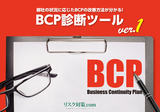2013/02/13
リスク対策ドットコム英語版>記事
- View developing business continuity strategies as a joint challenge with mutual benefits
- Share business continuity standards and policies
- Jointly conduct business continuity workshops to provide guidance in developing coordinated and integrated business continuity strategies and plans
- Share planning templates and tools
- Work together to develop contingency plans for what will happen when a disaster or significant operational disruption occurs, yours or theirs
- Conduct joint business continuity training sessions, exercises, and tests
- Keep the lines of communication open on an ongoing basis, not just after a problem occurs
●This article was translated into Japanese and published on magazine "Risk-taisaku.com" vol.34.
◆Profile Betty A. Kildow, FBCI, CBCP, has provided business continuity consulting services to a wide variety of businesses and organizations for more than twenty years. She is the author of “A Supply Chain Management Guide to Business Continuity” (2011), available in English and in Japanese: 「事業継続」のための サプライチェーン・マネジメント 実践マニュアル. Betty can be reached at BettyKildow@comcast.com or by phone at +001-765-483-9365.
リスク対策ドットコム英語版>記事の他の記事
- An ‘App’ for everything; But can Apps for Disaster save lives?
- Once upon a time in Fukushima
- UK experience of the Impact of Volcanic Eruptions
- BS25999 Certification Is No Guarantee of a Robust, Fit-for-purpose Business Continuity Capability
- A need to re-think the trade-off between continuity and productivity
おすすめ記事
-

自社の危機管理の進捗管理表を公開
食品スーパーの西友では、危機管理の進捗を独自に制作したテンプレートで管理している。人事総務本部 リスク・コンプライアンス部リスクマネジメントダイレクターの村上邦彦氏らが中心となってつくったもので、現状の危機管理上の課題に対して、いつまでに誰が何をするのか、どこまで進んだのかが一目で確認できる。
2025/04/24
-

-

常識をくつがえす山火事世界各地で増える森林火災
2025年、日本各地で発生した大規模な山火事は、これまでの常識をくつがえした。山火事に詳しい日本大学の串田圭司教授は「かつてないほどの面積が燃え、被害が拡大した」と語る。なぜ、山火事は広がったのだろうか。
2025/04/23
-

リスク対策.com編集長が斬る!今週のニュース解説
毎週火曜日(平日のみ)朝9時~、リスク対策.com編集長 中澤幸介と兵庫県立大学教授 木村玲欧氏(心理学・危機管理学)が今週注目のニュースを短く、わかりやすく解説します。
2025/04/22
-

帰宅困難者へ寄り添い安心を提供する
BCPを「非常時だけの取り組み」ととらえると、対策もコストも必要最小限になりがち。しかし「企業価値向上の取り組み」ととらえると、可能性は大きく広がります。西武鉄道は2025年度、災害直後に帰宅困難者・滞留者に駅のスペースを開放。立ち寄りサービスや一時待機場所を提供する「駅まちレジリエンス」プロジェクトを本格化します。
2025/04/21
-

-

大阪・関西万博 多難なスタート会場外のリスクにも注視
4月13日、大阪・関西万博が開幕した。約14万1000人が訪れた初日は、通信障害により入場チケットであるQRコード表示に手間取り、入場のために長蛇の列が続いた。インドなど5カ国のパビリオンは工事の遅れで未完成のまま。雨にも見舞われる、多難なスタートとなった。東京オリンピックに続くこの大規模イベントは、開催期間が半年間にもおよぶ。大阪・関西万博のリスクについて、テロ対策や危機管理が専門の板橋功氏に聞いた。
2025/04/15
-

BCMSで社会的供給責任を果たせる体制づくり能登半島地震を機に見直し図り新規訓練を導入
日本精工(東京都品川区、市井明俊代表執行役社長・CEO)は、2024年元日に発生した能登半島地震で、直接的な被害を受けたわけではない。しかし、増加した製品ニーズに応え、社会的供給責任を果たした。また、被害がなくとも明らかになった課題を直視し、対策を進めている。
2025/04/15
-

-

生コン・アスファルト工場の早期再稼働を支援
能登半島地震では、初動や支援における道路の重要性が再認識されました。寸断箇所の啓開にあたる建設業者の尽力はもちろんですが、その後の応急復旧には補修資材が欠かせません。大手プラントメーカーの日工は2025年度、取引先の生コン・アスファルト工場が資材供給を継続するための支援強化に乗り出します。
2025/04/14





















![2022年下半期リスクマネジメント・BCP事例集[永久保存版]](https://risk.ismcdn.jp/mwimgs/8/2/160wm/img_8265ba4dd7d348cb1445778f13da5c6a149038.png)






※スパム投稿防止のためコメントは編集部の承認制となっておりますが、いただいたコメントは原則、すべて掲載いたします。
※個人情報は入力しないようご注意ください。
» パスワードをお忘れの方